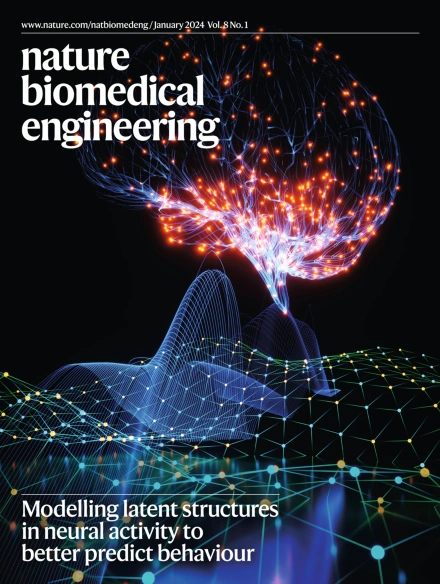Deep-learning-based HER2 status assessment from multimodal breast cancer data predicts neoadjuvant therapy response.
IF 26.8
1区 医学
Q1 ENGINEERING, BIOMEDICAL
引用次数: 0
Abstract
Accurate assessment of human epidermal growth factor receptor 2 (HER2) status is crucial for effective breast cancer treatment planning and improved patient outcomes. Traditional needle biopsies, limited in tissue sampling, often lead to inaccurate assessments due to intratumoural heterogeneity. Here, to address this, we introduce the deep-learning-based HER2 multimodal alignment and prediction (MAP) model, which leverages pretreatment multimodal breast cancer images for a more comprehensive reflection of tumour characteristics and provides more accurate HER2 status prediction. We develop patient response MAP models to demonstrate the HER2 prediction performance of our model compared with needle biopsies from patients receiving neoadjuvant therapy. A large-scale multimodal breast cancer dataset from 4 centres, consisting of 14,472 images from 6,991 cases, is adopted in this study, and the results consistently demonstrate the superiority of our HER2 MAP model in predicting patient response. These findings highlight the substantial advantages of our HER2 predictions. Our study provides physicians with a crucial tool for informed clinical decisions and treatment plans, aiming to improve outcomes in patients with breast cancer.基于深度学习的多模态乳腺癌HER2状态评估预测新辅助治疗反应。
准确评估人表皮生长因子受体2 (HER2)状态对于有效的乳腺癌治疗计划和改善患者预后至关重要。传统的针活检在组织取样方面受到限制,由于肿瘤内的异质性,常常导致不准确的评估。为了解决这个问题,我们引入了基于深度学习的HER2多模态对齐和预测(MAP)模型,该模型利用预处理的多模态乳腺癌图像更全面地反映肿瘤特征,并提供更准确的HER2状态预测。我们开发了患者反应MAP模型,以证明我们的模型与接受新辅助治疗的患者的针活检相比的HER2预测性能。本研究采用了来自4个中心的大规模多模态乳腺癌数据集,包括来自6,991例病例的14,472张图像,结果一致证明了我们的HER2 MAP模型在预测患者反应方面的优势。这些发现突出了我们的HER2预测的实质性优势。我们的研究为医生提供了一个重要的工具,以知情的临床决策和治疗计划,旨在改善乳腺癌患者的预后。
本文章由计算机程序翻译,如有差异,请以英文原文为准。
求助全文
约1分钟内获得全文
求助全文
来源期刊

Nature Biomedical Engineering
Medicine-Medicine (miscellaneous)
CiteScore
45.30
自引率
1.10%
发文量
138
期刊介绍:
Nature Biomedical Engineering is an online-only monthly journal that was launched in January 2017. It aims to publish original research, reviews, and commentary focusing on applied biomedicine and health technology. The journal targets a diverse audience, including life scientists who are involved in developing experimental or computational systems and methods to enhance our understanding of human physiology. It also covers biomedical researchers and engineers who are engaged in designing or optimizing therapies, assays, devices, or procedures for diagnosing or treating diseases. Additionally, clinicians, who make use of research outputs to evaluate patient health or administer therapy in various clinical settings and healthcare contexts, are also part of the target audience.
 求助内容:
求助内容: 应助结果提醒方式:
应助结果提醒方式:


